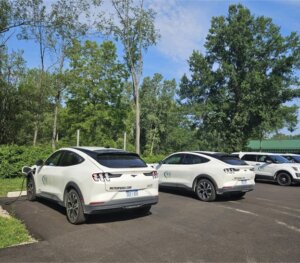Reducing Emissions Through Equipment
August 20, 2025
By: Shana Totten, Park Interpreter
The Huron-Clinton Metroparks launched a comprehensive Climate Action Plan in 2023 that addresses the many roles and responsibilities the Metroparks can take with regard to managing, mitigating, and reducing climate impacts across several categories. One category that your Metroparks is addressing is transportation. We’re considering transportation through the lenses of transit to the parks and within the parks and addressing barriers to access as well as reducing carbon emissions.
Let’s explore some of the ways we’re working to reduce our carbon emissions. The first way is that we conducted a study on electric vehicles. First, we needed to find a spot for an electric vehicle charger to be placed. We partnered with Red-E for the charging stations and found two locations inside Willow Metropark, one at the park office for park vehicles and one at the golf course for public use. The charging station located at the Willow Golf Course is perfect for golfers to charge up while playing a round.
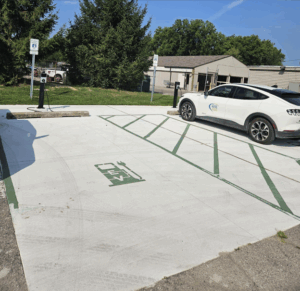
For the electric vehicles, we were able to get two Mach-E’s. The community outreach team would be the pilot drivers for the vehicles. This team travels regularly to bring the parks to community groups, events, festivals, and schools. Since the outreach team has two Expeditions, they would be able to compare the capabilities of the Mach-E’s to a ‘regular’ car and test the full driving range of the electric vehicles.
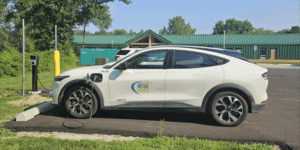
Next, we looked at reducing the emissions from our maintenance equipment. We purchased two fully electric riding lawn mowers by Toro for Huron Meadows Metropark. While some new equipment is being rolled out, we are also intentional about using current equipment for as long as we can. We will be upgrading and replacing gas-powered equipment with battery powered replacements once the gas-powered ones have come to the end of their lifespans.
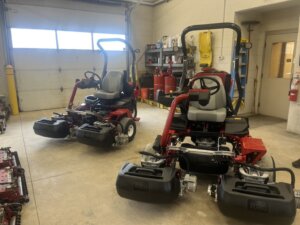
As another effort to reduce emissions, ‘Grow Zones’ have been introduced. These are zones that are intentionally left not mowed. This helps to reduce the amount of time our gas-powered lawn mowers are running which reduces the emissions they are producing. These ‘Grow Zones’ also help improve natural habitat for pollinators and migratory birds.
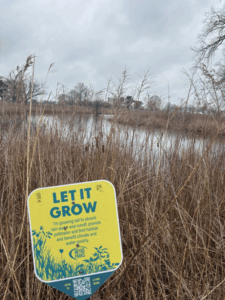
The electric vehicles and the electric lawn mowers are being run on a trial/pilot program. This means that we are tracking a lot of data about them closely. We want to ensure they are able to perform all job duties as necessary and that they are reducing our carbon emissions. Some of the data we collect looks at how well the equipment performs in various weather conditions. We also look at how long the equipment can operate on a single charge. Staff input is also taken into consideration to ensure the equipment allows them to perform their job duties the same as if they were using the gas-powered equipment. Finally, maintenance costs and longevity are taken into consideration. While our pilot equipment is new and still under warranty, we are comparing the costs to maintain the equipment, part replacement, and longevity of equipment as it compares to traditional gas-powered items.
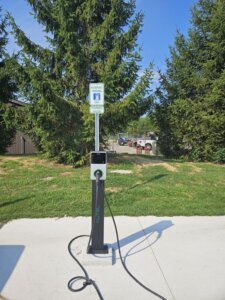
The information we get from this data will better inform us on if this equipment is the right equipment for us to reduce our carbon emissions or if we need to explore other options or possibly look into changing how we implement the equipment they have. There are many alternatives to gas-powered machines available and many ways to implement them into our everyday work lives.
We are taking an approach that tries to take a step back and look at the whole picture. We want to do what is best for the environment, our staff, and your Metroparks as a whole. This process will be data driven and take time.
